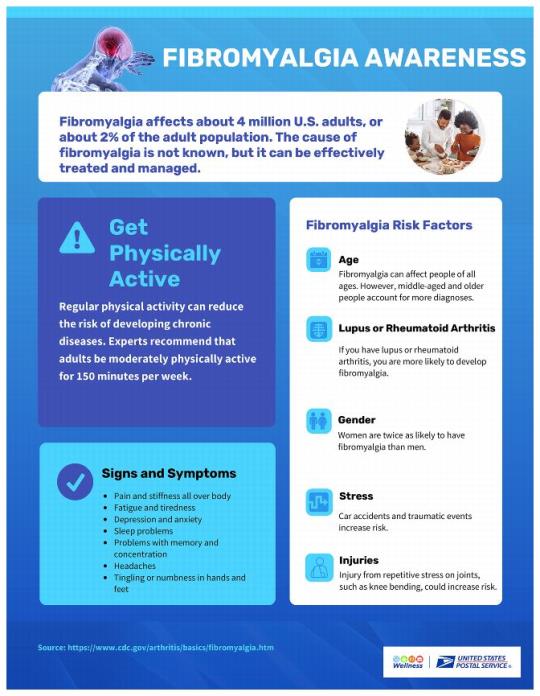Fibromyalgia is a chronic condition that causes pain, fatigue, and other symptoms throughout the body. The exact cause is unknown; however, researchers believe that trauma, viral infections, and injury can contribute to developing the disorder.
Sleep problems, headaches, issues with memory or concentration, pain and stiffness throughout the body are all common symptoms. Others are tingling or numbness in the hands and feet, digestive ailments, and jaw pain, such as temporal mandibular joint syndrome. Doctors typically will consult X-rays, review a patient’s medical history, conduct a physical exam, and do blood work to diagnose the condition.
Although fibromyalgia can affect people of all ages, most people are diagnosed during middle age. People with lupus or rheumatoid arthritis are more likely to develop the condition. Women are twice as likely to have fibromyalgia as men. Obesity and family history also contribute to the risk.
There is no present cure for the disorder. Treatment may include the use of over-the-counter pain medication and prescription drugs. Lifestyle changes, such as increasing physical activity or seeing a physical therapist who can create a personalized wellness strategy, might be helpful. Yoga, cognitive behavioral therapy, and muscle strengthening exercises have also been known to provide some relief.
This information does not constitute medical advice for fibromyalgia, and individuals should consult their own health care professionals.
For more information about symptoms and management strategies for fibromyalgia, visit cdc.gov/arthritis/basics/fibromyalgia.htm.
— Benefits and Wellness,
Human Resources, 9-22-22
